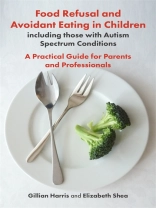Many autistic children have a restricted dietary range, and this book provides parents with advice and training on how to support them to achieve a healthier and more balanced diet. Now described as Avoidant or Restrictive Food Intake Disorder (ARFID), it is due to sensory hypersensitivity, and it can impact the child’s health, their family life, and their social life.
Based on successful training packages the authors provide for parents and professionals, this book enables the reader to understand restrictive eating and work with children, gradually increasing the range of food a child is able to eat. It includes ‘box outs’ with case studies, points of interest and action points to make this an accessible read full of tips and strategies.
表中的内容
Acknowledgments; Introduction; PART I. Introduction To Part 1; 1. The Early Stages; 2. Neophobia; The Onset Of The Fear Of New And Different Foods; 3. Sensory Factors And How These Affect Food Acceptance; 4. The Disgust Response And The Development Of Avoidant Eating; 5. Appetite And Appetite Regulation; 6. What Is Avoidant And Restrictive Food Intake Disorder?; PART II. Introduction To Part 2; 7. Managing The Environment Around The Child; 8. Is The Child Reasdy To Move On?; 9. What Doesn’t Work And Why; 10. Interventions With The Younger Child; 11. Interventions With The Older Child; 12. What Else Might Be Going Wrong?; Bibliography; Resources












